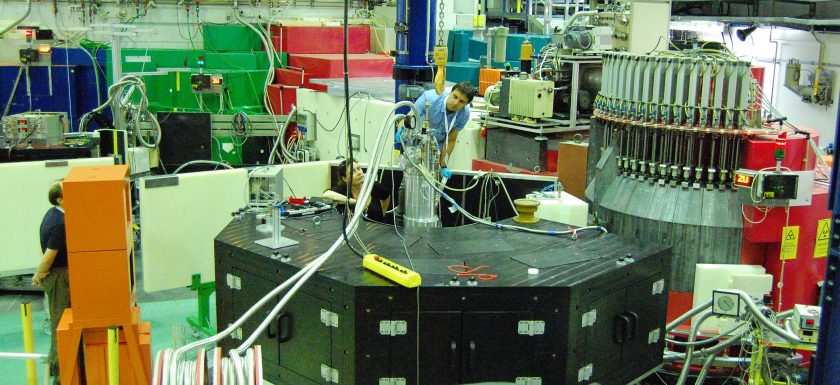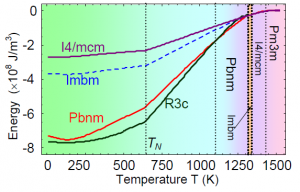
An international team has examined pristine and slightly doped bismuth ferrite using experimental data obtained at HZB. The research shows the sequence of serial and trigger-type phase transitions, the temperature-dependent behavior of the order parameters, and the corresponding susceptibilities to external stimuli.
The material:
Multiferroics are materials that exhibit multiple types of ferroic ordering, such as ferromagnetism and ferroelectricity, simultaneously. BiFeO3 (BFO) is the one of the rare multiferroics with a strong ferroelectric polarization, antiferromagnetism at room temperature as well as conduction and magnetotransport at domain walls. This makes it a candidate for a range of applications.
The question:
What are the underlying physical mechanisms responsible for the multiferroic properties of bismuth ferrite?
The results:
Based on new X -ray and neutron diffraction experiments, the team could construct a “Landau–Ginzburg” thermodynamic potential, and the corresponding phase diagram for pristine and slightly doped bismuth ferrite. A strong biquadratic antiferrodistortive-type coupling is the key to a quantitative description as well as for the prediction of novel intermediate structural phases.
-ray and neutron diffraction experiments, the team could construct a “Landau–Ginzburg” thermodynamic potential, and the corresponding phase diagram for pristine and slightly doped bismuth ferrite. A strong biquadratic antiferrodistortive-type coupling is the key to a quantitative description as well as for the prediction of novel intermediate structural phases.
The method:
The research was performed using the fine resolution powder diffractometer E9 at BERII to obtain high resolution diffraction data at different temperatures. Utilizing this diffractometer has allowed fast acquisition of the diffraction data which is critical for high temperature measurements where the samples become unstable due to a decomposition process. The international experimental team was heavily supported by Dr. Alexandra Franz (EM-ASD), the E9 instrument scientist.
The publication: The research is published in npj Computational Materials (2017) and has been supported by the Russian Science Foundation (project # 15-19-20038)
“Thermodynamic potential and phase diagram for multiferroic bismuth ferrite (BiFeO3)”, Dmitry V. Karpinsky, Eugene A. Eliseev, Fei Xue, Maxim V. Silibin, Alexandra Franz, Maya D. Glinchuk, Igor O. Troyanchuk, Sergey A. Gavrilov, Venkatraman Gopalan, Long-Qing Chen & Anna N. Morozovska
